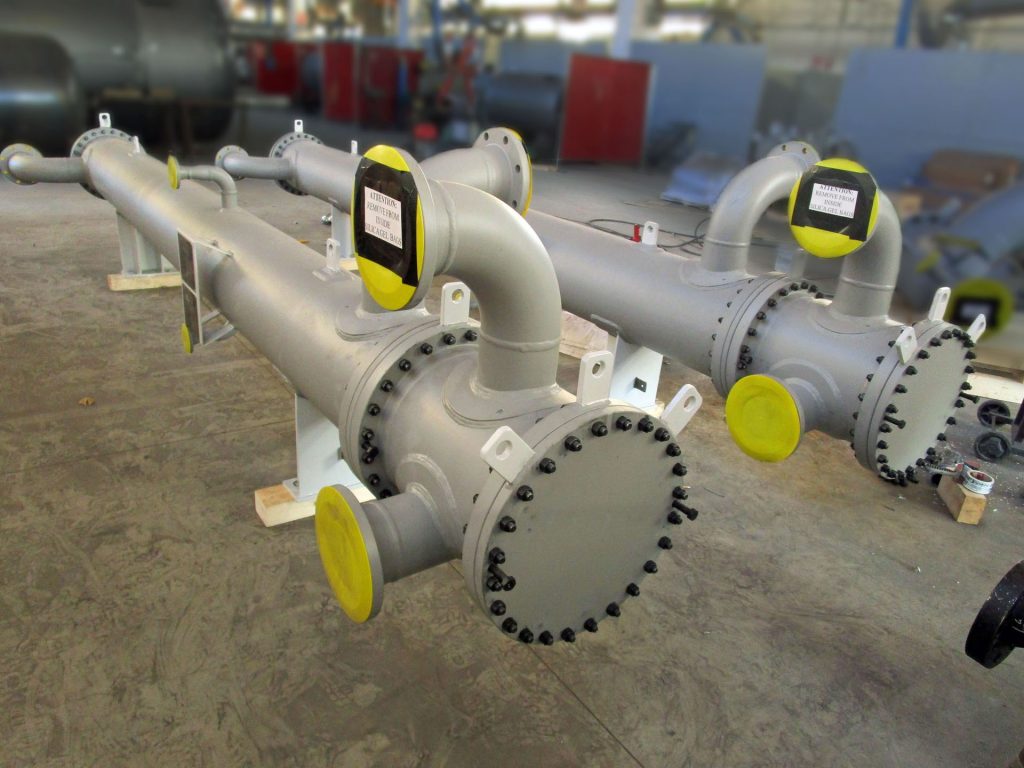Other types of tubular exchanger include:
- Furnaces—the process fluid passes through the furnace in straight or helically wound tubes and the heating is either by burners or electric heaters.
- Tubes in plate—these are mainly found in heat recovery and air conditioning applications. The tubes are normally mounted in some form of duct and the plates act as supports and provide extra surface area in the form of fins.
- Electrically heated–in this case the fluid normally flows over the outside of electrically heated tubes, (see Joule Heating).
Air Cooled Heat Exchangers consist of bundle of tubes, a fan system and supporting structure. The tubes can have various type of fins in order to provide additional surface area on the air side. Air is either sucked up through the tubes by a fan mounted above the bundle (induced draught) or blown through the tubes by a fan mounted under the bundle (forced draught). They tend to be used in locations where there are problems in obtaining an adequate supply of
| Other types of tubular exchanger include: Furnaces—the process fluid passes through the furnace in straight or helically wound tubes and the heating is either by burners or electric heaters.Tubes in plate—these are mainly found in heat recovery and air conditioning applications. The tubes are normally mounted in some form of duct and the plates act as supports and provide extra surface area in the form of fins.Electrically heated–in this case the fluid normally flows over the outside of electrically heated tubes, (see Joule Heating).Air Cooled Heat Exchangers consist of bundle of tubes, a fan system and supporting structure. The tubes can have various type of fins in order to provide additional surface area on the air side. Air is either sucked up through the tubes by a fan mounted above the bundle (induced draught) or blown through the tubes by a fan mounted under the bundle (forced draught). They tend to be used in locations where there are problems in obtaining an adequate supply of cooling water.Heat Pipes, Agitated Vessels and Graphite Block Exchangers can be regarded as tubular or could be placed under Recuperative “Specials”. A heat pipe consists of a pipe, a wick material and a working fluid. The working fluid absorbs heat, evaporates and passes to the other end of the heat pipe where it condenses and releases heat. The fluid then returns by capillary action to the hot end of the heat pipe to re-evaporate. Agitated vessels are mainly used to heat viscous fluids. They consist of a vessel with tubes on the inside and an agitator such as a propeller or a helical ribbon impeller. The tubes carry the hot fluid and the agitator is introduced to ensure uniform heating of the cold fluid. Carbon block exchangers are normally used when corrosive fluids need to be heated or cooled. They consist of solid blocks of carbon which have holes drilled in them for the fluids to pass through. The blocks are then bolted together with headers to form the heat exchanger. |
